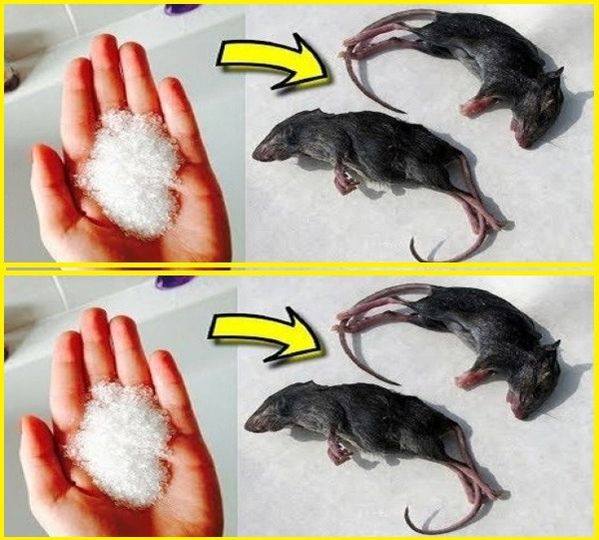ADVERTISEMENT
#### **Popular Natural Repellents:**
– **Peppermint oil**: Mice and rats dislike the strong scent of peppermint. You can create a peppermint spray by mixing a few drops of peppermint oil with water and spraying it around entry points and areas where you’ve seen rodent activity. Alternatively, you can place cotton balls soaked in peppermint oil in corners, behind furniture, or near potential entry points.
– **Cayenne pepper**: The strong smell and spiciness of cayenne pepper can repel rodents. Sprinkle it around entry points, on windowsills, or anywhere you’ve noticed rodent activity.
– **Cloves and bay leaves**: Mice and rats find the scent of cloves and bay leaves unappealing. You can place them in corners, cupboards, and near food storage areas to ward off rodents.
– **Essential oils**: Other essential oils like eucalyptus and citronella are also effective in repelling rodents. Mix these oils with water and spray them around your home.
These natural remedies may not always work as quickly or effectively as traps, but they can help to deter rodents in the long run and provide a non-toxic alternative to chemical repellents.
### 4. **Set Traps Strategically**
When dealing with an active infestation, traps can be an effective tool for capturing and removing mice and rats. The key to successful trapping is placing the traps in the right locations and using the right bait.
#### **Choosing the Right Traps:**
– **Snap traps**: These are one of the most effective types of traps for quickly and humanely killing rodents. Make sure to place them along walls or paths where you’ve seen signs of rodent activity.
– **Live traps**: These traps capture rodents without killing them, allowing you to release them away from your home. Be sure to check these traps regularly so the animals don’t suffer from stress or dehydration.
– **Glue traps**: While effective, glue traps can be inhumane and should be used cautiously. If you opt for glue traps, check them frequently to avoid prolonged suffering.
#### **How to Use Traps Effectively:**
– Place traps along walls, behind appliances, or in corners where rodents are most likely to travel.
– Use bait such as peanut butter, chocolate, or dried fruit to attract mice and rats. Mice are particularly attracted to peanut butter.
– Avoid over-baiting the trap. A small amount of bait will suffice and ensure that the rodent triggers the trap.
Once the traps are set, monitor them regularly and remove any trapped rodents promptly.
### 5. **Install Door Sweeps and Weather Stripping**
One of the most common entry points for mice and rats is through gaps under doors. Even a small crack can provide an easy route for these rodents to slip into your home. Installing door sweeps and weather stripping is a simple yet highly effective way to prevent entry.
#### **What You Can Do:**
– **Install door sweeps**: These are small brushes or rubber seals that fit along the bottom of doors. They prevent rodents from squeezing underneath.
– **Use weather stripping**: Apply weather stripping to doors and windows to seal gaps. Make sure that it’s tightly sealed to prevent any spaces large enough for mice and rats to enter.
These preventive measures will make it much harder for rodents to get inside, especially during colder months when they’re more likely to seek warmth.
### 6. **Keep Your Yard and Outdoor Spaces Tidy**
Rodents often make their way into homes from the outside, so maintaining a clean yard and outdoor space is another important step in preventing infestations. Overgrown vegetation, piles of leaves, and accumulated debris can create perfect hiding spots for mice and rats.
#### **Tips for Maintaining Your Yard:**
– **Trim trees and bushes**: Keep branches and bushes well-trimmed and away from your home. Rodents can use overhanging branches to access your roof or windows.
– **Remove debris**: Clear away any piles of leaves, wood, or trash that may attract rodents. These piles provide shelter and food sources for mice and rats.
– **Store firewood properly**: If you store firewood outside, keep it elevated off the ground and away from the house. This will reduce the chances of rodents nesting in or around it.
By maintaining your yard, you’ll eliminate some of the easiest routes for rodents to access your home.
### 7. **Use Ultrasonic Repellents**
Ultrasonic repellents are devices that emit high-frequency sound waves that are inaudible to humans but can be very disturbing to rodents. These devices are designed to disrupt the rodents’ communication and navigation systems, making them uncomfortable in your home and encouraging them to leave.
While ultrasonic repellents are not always a foolproof solution, they can serve as an additional layer of protection when used in conjunction with other methods.
#### **How to Use Ultrasonic Repellents:**
– Place the device in areas where you’ve noticed rodent activity, such as the kitchen, attic, or basement.
– Be sure to follow the manufacturer’s instructions on placement and operation to maximize effectiveness.
It’s worth noting that ultrasonic repellents may not work for all rodents or in all environments, but they can still be a helpful tool for deterring pests.
### 8. **Maintain a Well-Ventilated Attic and Crawl Space**
Rodents, especially rats, like to nest in dark, hidden places, which is why attics, basements, and crawl spaces are often prime targets. If these areas are cluttered, poorly ventilated, or have easy access points, they may attract rodents.
For Complete Cooking STEPS Please Head On Over To Next Page Or Open button (>) and don’t forget to SHARE with your Facebook friends
